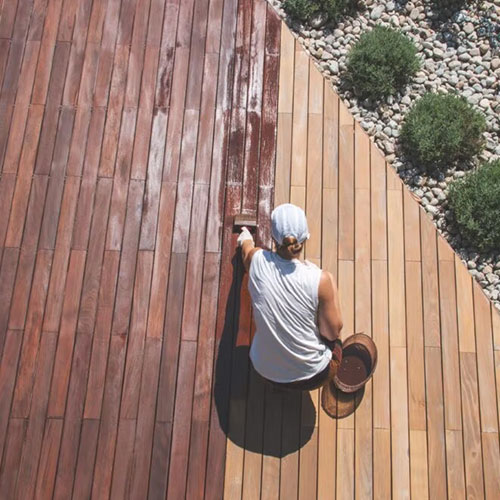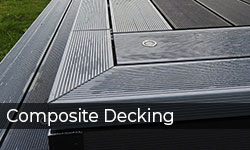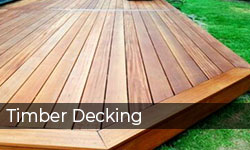
Timber Decking
Timber Decking
Adding a garden building to your home is a clever way to increase living space. You can use this extra space as a yoga studio, home office, bar or simply somewhere to relax and spend some “me time” after a tiring day. While a garden room itself is an asset, adding a deck around it will definitely help to spruce it up.
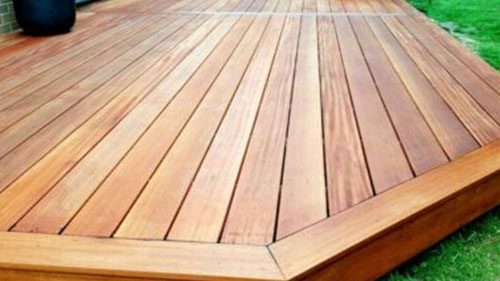

A garden building can either be built on the top of a deck or the decking can be used as an external extension of the garden room. Some of the purposes that a deck serves in this regard are as follows:
A Base for The Building
A deck base provides a simpler and more serviceable foundation for your garden room than a concrete base. It offers a perfect solution for areas where the ground is uneven or where a concrete base will not be a suitable option. Moreover, a deck base will be easier to disassemble and then rebuild at a new site if you move house or want to change the location of your garden room. Such a base typically includes:
- A timber frame
- Plastic supports that can be recycled
- Concrete footings to bear the weight
- More Space To Be Used
A large deck around your garden room means you have more floor space that can be used for various purposes.
You can use the front deck as an outdoor dining area. Add furniture made out of some light material like wicker or plastic and be closer to your beloved plants while enjoying your meals.
Growing plants on your deck is also a great idea. The soil in plant pots warms up quickly thus providing a better-suited climate for the plants to thrive.
Many people use the extra space to maintain a fire pit. This will enable you to stay warm and toasty while enjoying your garden on chilly evenings, although care should always be taken if your decking is wooden, keep a fire extinguisher on hand and ensure your fire is completely out before you leave.
It’s a good idea to store your garden tools on the deck, preferably in a storage box, especially if you are using the garden room as an office and want to keep its look professional.
Decking Paths And Walkways
You can install wooden pathways to connect your garden building to your house, patio, or pool. These walkways are sturdy, inexpensive, and can add to the beauty of your yard, good maintenance will be required to avoid the surface becoming slippery.
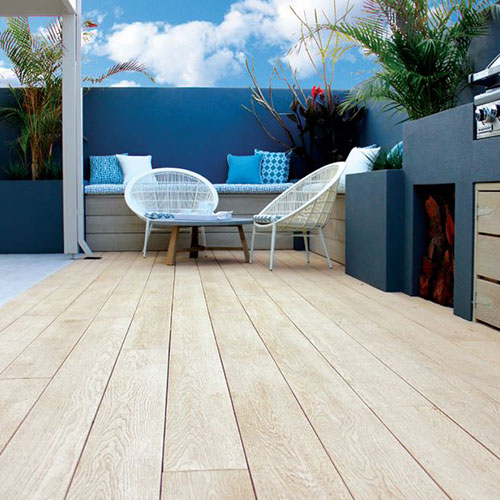
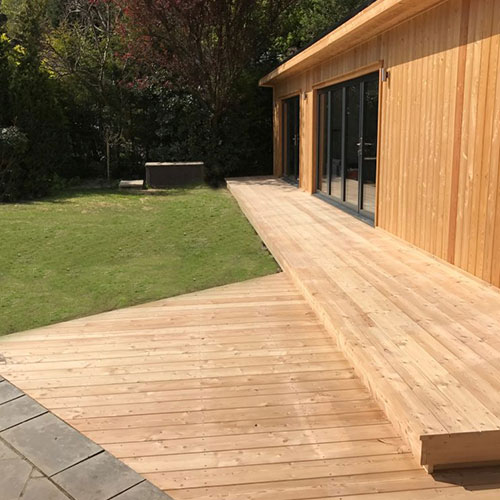
1. Choose the Material Carefully
The material used to build the decking can be:
A. Timber
Timber remains the top choice of people when it comes to outdoor decking. Its pros being:
Timber gives a natural and rustic look to the structures.
Timber is easy to deal with which cuts down on the installation cost.
Good quality timber boards are durable and do not deform as quickly as other materials.
B. Composite decking
Another great option for this purpose is composite decking. The “composite” is made up of a blend of wood pulp, sawdust, and plastic. This mixture is ultimately shaped into boards. These boards are made to look like timber. Composite is preferable to timber if you need something inexpensive that is also low maintenance.
2. Invest in High-Quality Screws
If you are thinking of saving money by buying low-quality screws for your deck, you should reconsider your decision. Low-quality screws are more prone to corrosion and may stain the deck boards. The screws also bear the weight of the structure, which is another reason why you need to invest in high-quality fasteners. Often, when old decks become rickety, it’s because of the screws.
3. Anti-Slip Stains
Deck floors can get slippery very easily which may prove to be hazardous. Anti-slip coatings or deck oils are usually used to make the floor slip-resistant. You need to keep these options in mind to keep your deck from getting slippery. You should also add railing around your deck for protection, especially if it’s a raised deck.
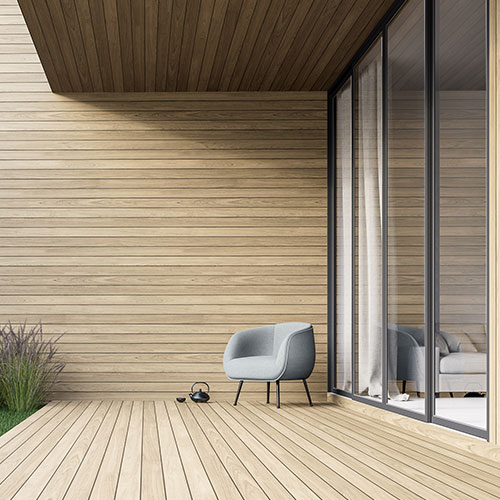

A garden room with decking is not always a good idea. The following points regarding the disadvantages may help you to make a decision:
Even if the decking material is low maintenance, it still needs to be looked after. Moss or algae growth on the floor may make it slippery. You will need to clean it regularly. Similarly, regular inspection will also be needed to prevent any protruding nails or loose boards from causing further damage.
If planning permission is required for the deck it is an added inconvenience.
Building and maintaining a deck may be expensive. High-quality timber needs to be stained and painted regularly. This annual maintenance requires money, time and energy.
When you decide to move to a new place, the deck may have to be disassembled and then carried to your new home.
Pressure-treated (PT) softwood deck
Materials:
Pressure-treated (PT) lumber is made from softwood species such as pine, fir, and spruce. The wood from these plants is immersed in a chemical preservative under high pressure to make the chemicals seep deeper into the wood fibres. This technique distinguishes PT wood from other chemically-treated wood, which is merely coated on the surface. Chemicals in PT wood, such as copper, are toxic to insects and fungi that may cause rot and damage, extending the lifespan of this option.
Cost and durability:
PT wood’s affordability makes it among the most popular kinds of lumber used to build decks. Homeowners who want to build a sturdy deck within their means turn to PT wood. Although PT wood’s upfront costs are cheaper compared to other wooden deck materials, the maintenance necessities, such as annual sealing and regular power washing, can make it costly in the long run. While PT wood is resistant to insects, it is not impervious to moisture. Decks made from this wood will only have an average lifespan of only nine years in wet climates, compared to decks made of hardwoods and modified wood.
Downsides:
The chemicals in PT decks can be harmful when humans and pets regularly come into direct contact with its surface. Splinters from PT decks can lead to infections since these types of wood have chemical substances infused in them.
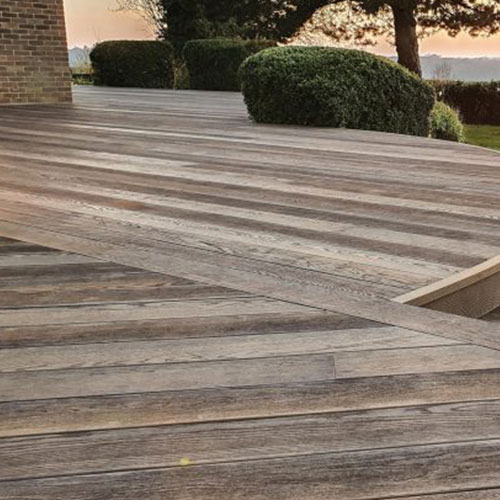
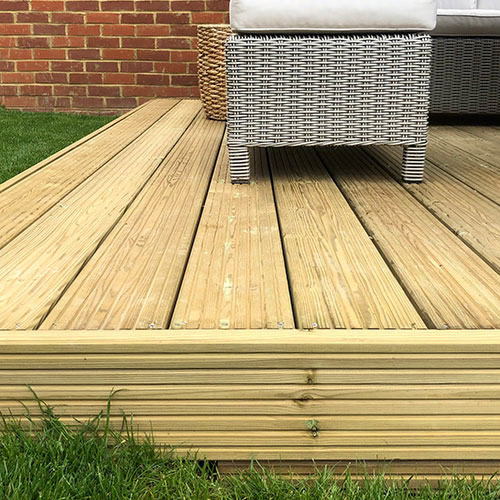
Thermally-modified wood
Materials:
In contrast with the chemical infusion involved in PT wood, thermally-modified wood undergoes heat treatment. This basically involves drying the wood to make it resistant to moisture, fungi, and insect infestations. While any timber can undergo thermal modification, most manufacturers use softwood species that are easy to grow and replace, making the process sustainable. Since it does not contain the harsh chemicals PT wood does, thermally-modified wood is a safer choice for households with pets and kids. When it ages, it produces the same sleek look as aged hardwoods.
Cost and durability:
Of these three types of materials, thermally-modified wood is the only one resistant to moisture. Hence, decks made out of this type of timber require less maintenance compared to PT wood and hardwood, in turn meaning less long-term costs.
Downsides:
Heat tends to denature plant proteins. Thus, thermally-modified wood is less durable than hardwood.
Hardwoods: Redwood and cedar
Materials:
Boards made of hardwoods come from trees like cedar and redwood. These woods have more beautiful wood grain and have no knots. Although these two types of lumber differ in colour, both take on a silvery brown colour as they age.
Cost and durability:
Hardwoods, especially those made from rare heartwood lumber, can be expensive. The fact that the UK imports these materials make hardwoods even more costly.
Downsides:
Contrary to what most people think, only heartwood lumber is inherently resistant to insects and rot. Since most commercial hardwoods sold in the market are grown on timber plantations, these trees have no time to form heartwood before they are cut down and sold. Consequently, most lumber products marketed as “hardwood” are actually sapwood, which might need chemical treatments and annual maintenance measures to be rot-resistant like heartwood.
